This is a guide to help you navigate the materials of our clothes, so you can make more sustainable choices when buying clothes – second-hand or new.
PS. Are you looking to lower your carbon footprint and contribute to a more sustainable world? We would love to help! Take responsibility for the carbon footprint of your lifestyle now!
There are two types of textile fibers – natural and synthetic.
The natural fibers comes from nature, like cotton and flax or from animals, like silk and wool. Synthetic fibers are, well, made from synthetic fibers.
There’s also something that is often referred to as semi-synthetic which are made from natural materials like cellulosa from trees but the fibers are made artificially.
The most common synthetic fibers are made from fossil fuels, and the most common material is known as polyester.
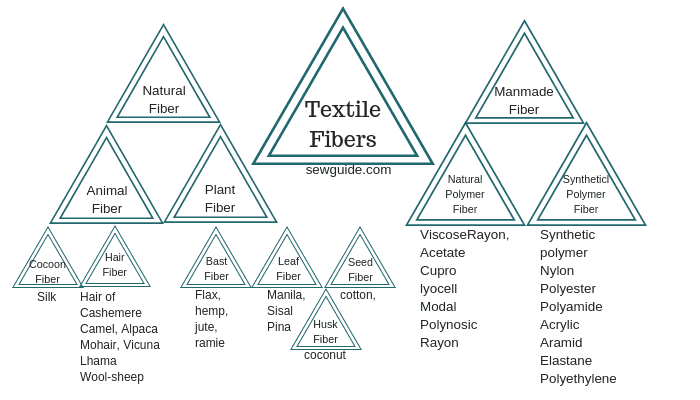
SYNTHETHIC FIBERS
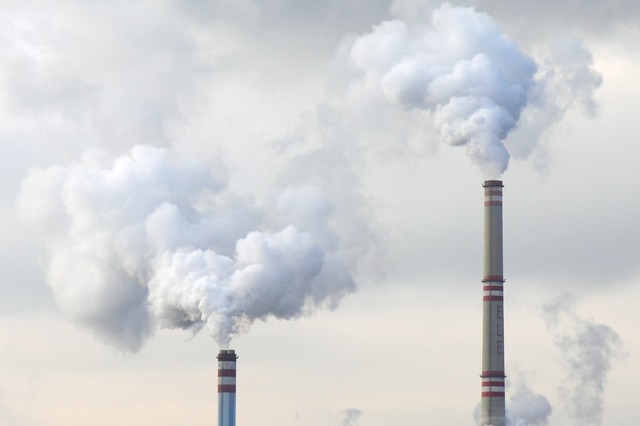
ACRYLIC:
Acrylic is artificially made by petroleum and is a kind of plastic. In the making of acrylic, it takes a lot of toxic chemicals and needs a lot of resources which makes this kind of synthetic fibers one of the worst in terms of environment.
The fabric is very sensitive to heat and often gets pills, those tiny little balls appearing on the surface of the fabric.
As with all synthetic fibers, they release tiny microplastics when they are washed which are entering the water systems, out into the ocean creating a lot of health issues for animals an humans alike. You can read more about how to handle synthetic fibers to minimise the release of microplastics into our waters here:
Plastic clothing – Pros, cons and how to deal with micro plastic pollution
+
- Warm
- Machine washable
- Cheap
- Lightweight
–
- Pills easily
- Doesn’t breathe
- Static builds up easily
- Can’t be recycled and is not biodegradable
- Release microplastics
- Energy intensive
- Highly polluting and uses toxic chemicals
ELASTANE / LYCRA / SPANDEX:
This material is super stretchy and is very often mixed in with other fibers to make the clothing more elastic, both natural and other synthetic materials.
+
- Very stretchy
- Helps to keep the shape of clothing
- Great to give a snug fit
- Perfect for swimwear and tight athletic wear
–
- Loses stretchiness and quality over time(with good quality it can stay elastic for very long though)
- Release microplastics
- Energy intensive
- Highly polluting and uses toxic chemicals
NYLON / POLYAMIDE:
The only difference is that nylon a name by a company and the fiber is polyamid.
Polyamid is a strong and elastic material that doesn’t wrinkle.
+
- Strong and durable
- Weather resistant, makes for great windbreaker or rain jacket
- Machine washable
- Cheap
- Versatile
–
- Non biodegradable
- Release microplastics
- Toxic chemicals are used
- Polluting
- Energy intensive
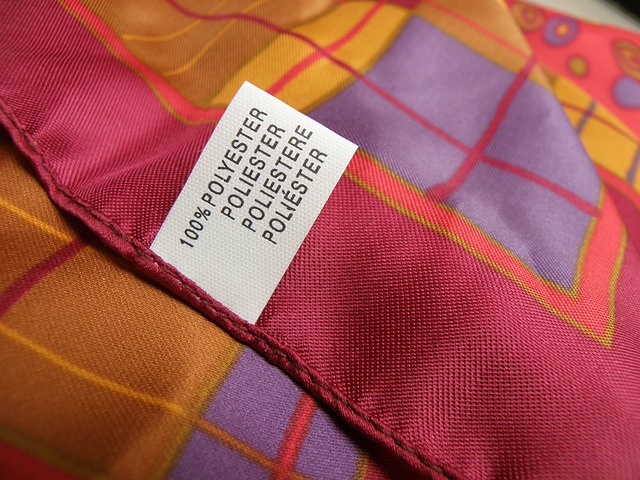
POLYESTER:
This is not only the most common synthetic fiber, but nowadays the most common fibre in clothing overall. Especially used in Fast Fashion, as it is such a cheap and versatile material. You can read more about Fast Fashion here:
What is Fast Fashion
+
- Cheap
- Durable
- Wrinkle resistant
- Colours last
- Hydrophobic which means it dries fast
- Keeps its shape
–
- Release microplastics when washed
- Heat sensitive
- Static easily builds up
- Doesn’t breathe
- Doesn’t biodegrade
- Loses a lot of its quality when recycled
- Toxic chemicals are used
- Highly polluting
- Energy intensive
NATURAL FIBERS
PLANT BASED
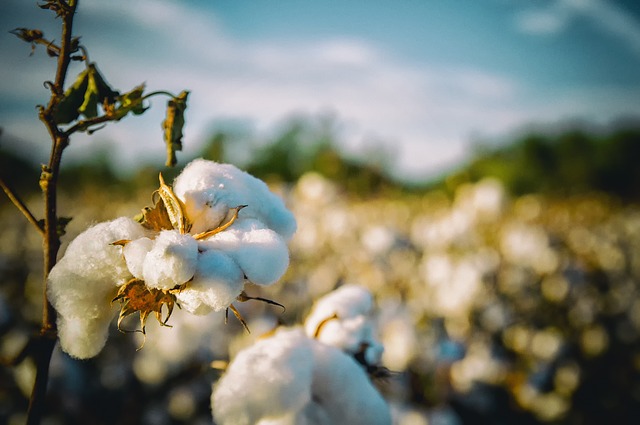
COTTON:
The most common material for clothing and while this is a natural fibre and can be grown organically without pesticides the cotton plant need a colossal amount of water to grow.
Properties: It takes up moisture easily which makes it good as towels or sheets but makes it not so good for workout clothing or swimwear as it soaks up the water and becomes very heavy. It also wrinkles easily.
+
- Soft
- Comfortable
- Breathable
- Durable
- Good moisture absorption
–
- Needs a lot of water to grow
- Tendency to shrink
- The biggest need for pesticides
- If organic it need even more water and land to grow
- Loses a lot of its quality when recycled
HEMP:
Hemp comes from the plant Cannabis Sativa and it might be the most sustainable and environmentally friendly option for textile and had been around for 10.000 years although it is not as common anymore due to law regulations of growing the plants.
Growing it is easy as it doesn’t need that much nutrition in the soil, and there’s no need for pesticides either. It can even be good for the land to grow the material as it binds the soil with its long roots, helping to prevent soil erosion. It’s also a nature fiber that is completely biodegradable and requires very little chemicals to create the fabric. The material is stronger than cotton and resembles linen is aesthetics.
So why is hemp such an unusual material in clothing, you might ask.
It wasn’t always like that. Linen and hemp were the most common materials in clothing way back and there are many theories in why hemp has been criminalised to grow in many parts of the world.
+
- 3x stronger than cotton
- UV resistant
- Durable
- Breathable
- Can be grown without fertilizer or pesticides
- Doesn’t need that much water to grow
- It binds the soil with its long roots, helping to prevent soil erosion
- Grows fast
- Completely natural and easy to recycle
- Softens more over time
–
- Can sometimes be rough
- Wrinkles easily
- Hard to find as it is illegal to grow in many parts of the world
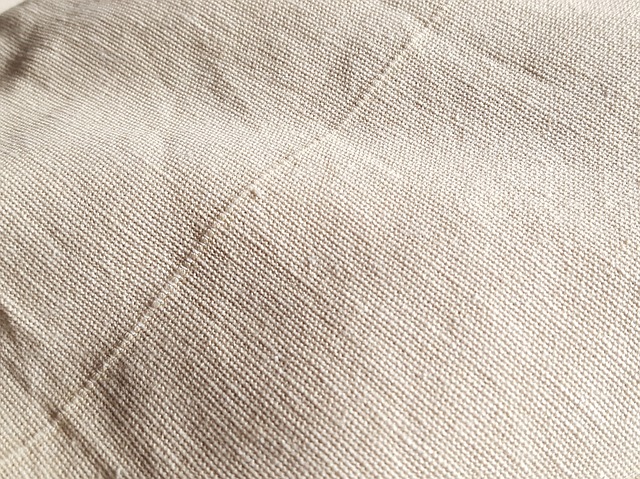
FLAX(LINEN):
The fabric linen is made from flax and comes from the stem of the flower of the plant. It’s a pretty stiff fabric and looks similar to the fabric made from hemp.
It’s not necessary to use pesticides when growing flax as it can grow in quite cold climates, where the risk of vermin is much smaller.
The process of making the linen is a time consuming process which can often bring up the price of it.
From an environmental point of view I’d call linen the second best material after hemp.
+
- Extremely breathable
- Perfect for hot weather and keeps you 3-4 degrees cooler than cotton
- Very strong & durable. 2x as strong as cotton
- Can be grown without fertilizer or pesticides
- Doesn’t need that much water to grow
- Completely natural, biodegradable and easy to recycle
–
- Wrinkles very easily
- Often needs special and delicate care
- Sometimes is dyed with toxic chemicals
ANIMAL BASED
WOOL:
When speaking of wool it is from the sheep, other wools normally go under other names, like Angora from the Angora Rabbit or Cashmere from the goats originating from the area Kashmir in India. They all have similar properties though, and here they are:
+
- Strong
- Good for both hot & cold climates
- Dirt & dust resistant
- Breathable
- Fire resistant
- Water resistant
- Absorbent
–
- Shrinks easily
- Can be itchy
- Often requires special care
- Can pill
- Not vegan
- Sometimes Mulesing* is used which is highly unethical
- Many sheeps have been over bred, causing them pain and suffering
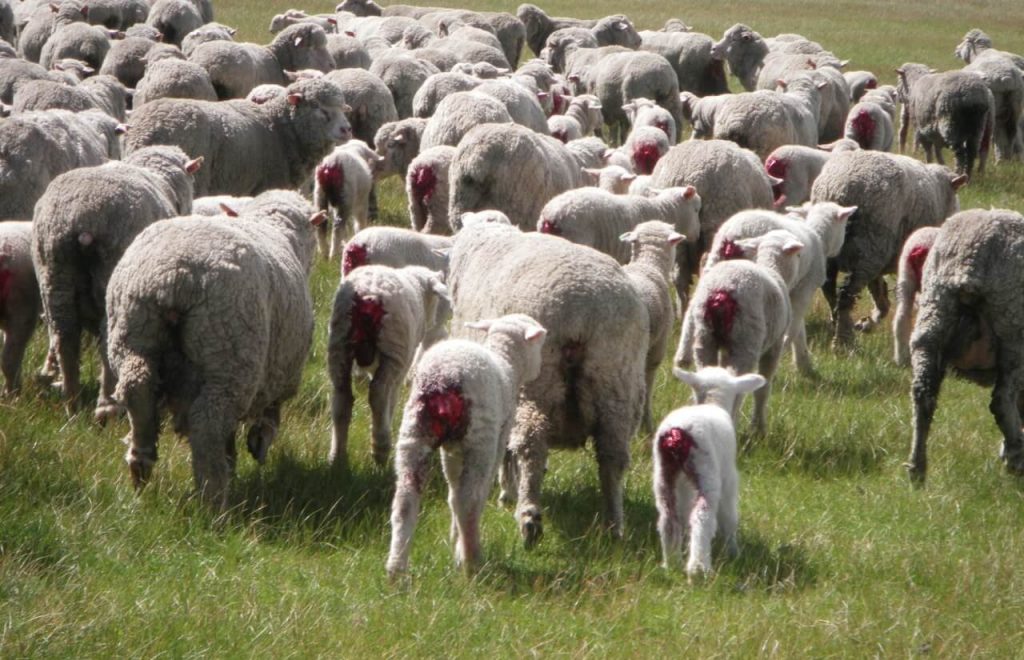
*Mulesing:
Mulesing is where they cut of, not just the wool but the whole skin around the anal anal an tail area of the sheep. As you can understand, this is considered highly unethical.
This is a technique used mainly in Australia and New Zealand to prevent a parasitic infection by fly larvae especially common among the merino sheep. As they have bred the merino sheep so hard to grow more wool, giving them wrinkly skin which can not only make some sheep collapse or die from heat exhaustion during hot summer months, but urine and moisture gets caught in the heavy wool and wrinkles which attracts the flies who lay their eggs in their skin. When the fly larvae has hatched it starts eating the skin on the sheep and that’s how the infection happens.
Luckily, New Zealand recently (October 1st, 2018) passed a new law to ban Mulesing. Now let’s hope Australia follows, as they are the biggest producer of wool in the world.
ALPACA:
This is a type of wool from the animal called Alpaca, who originates from the Andes in South America. It’s a very soft kind of wool and is in many cases better for those with allergies as it, unlike sheep wool doesn’t contain wool grease. It has a very small environmental impact.
ANGORA:
The angora wool comes from the angora rabbits. It is an incredibly soft wool but even though it is possible to cut the hair off of the rabbits, there’s far too many cases where it is pulled off of the animals, causing them immense pain and suffering.
CASHMERE:
This material comes from goats living in Asia, originating in the indian region Kashmir. While the fabric is made from the shedded wool after the winter season, the goats themselves are not very good for the environment for the fact that they tear up the roots from the grass they eat, which eliminates the protection from soil erosion and water washing away the nutrients in the soil, turning the land into desert like landscapes.
Cashmere is a very soft material and if often quite pricey.
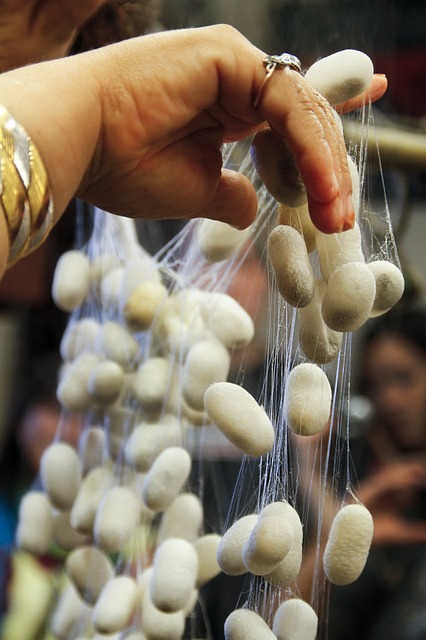
SILK:
Silk is made from the cocoon of silkworms. The most common kind is called Mulberry Silkworm. The textile was invented in China as long as 8.500 years ago.
+
- Soft
- Versatile
- Comfortable
- Very strong
- Good for both hot & cold climates
- Is biodegradable and can be recycled
–
- Expensive
- Often boil the worms alive
- Wrinkles easily
SEMI-SYNTHETIC FIBERS
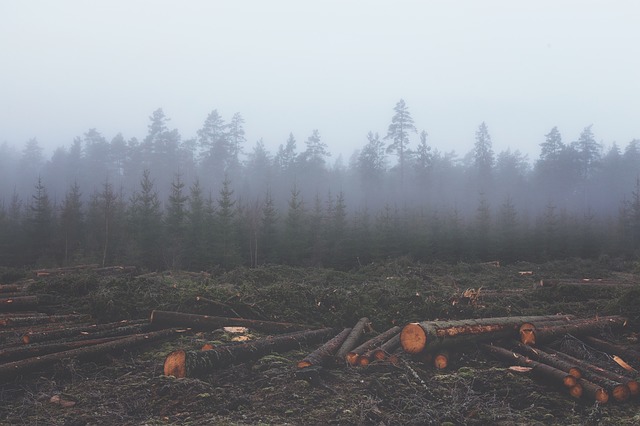
VISCOSE/RAYON:
Viscose is made from cellulose from wood pulp. And while this material is natural, the process of making it into fibers involves a lot of toxic chemicals, therefore it is in its own subcategory of being a semi-synthetic fibre.
There are different kinds of viscose, depending on the process or what material the cellulose is derived from. The most common material is wood pulp from the fir tree from the Pine family, when beechwood is used it is called Modal.
+
- Soft
- Cheap
- Absorbent
- Anti-static
–
- Wrinkles
- Not very durable and easily lose its shape
- Pills easily
- Can cause deforestation
- Toxic chemicals used
BAMBOO:
Bamboo has a great reputation in the sustainability market, as it grows extremely fast and doesn’t need pesticides to grow.
However the process of making the bamboo into fibers for textile requires a large amount of chemicals, many of them extremely toxic. Like carbon disulfide which is known to cause birth defects and difficulties procreating. It’s said to get 1 kg of bamboo viscose, it takes about 5,5 kg of chemicals.
+
- Very soft
- Breathable and absorbent
- Plant grows very fast
- Doesn’t require a lot of water or pesticides
–
- Energy intensive
- Requires a lot of toxic chemicals to make fibers
LYOCELL/TENCEL:
The difference from viscose is that Lyocell and Tencel are made in a closed loop system, so the chemicals are recycled. Tencel is like Lyocell but is an Austrian trademark and with this you can be sure the wood used is FSC certified.
+
- Wrinkle resistant
- Absorbent
- Soft
- Durable
- Breathable
- Versatile
- Biodegradable
- Responsible of their toxic chemical use
- Strong and machine washable
–
- Energy intensive
- Can lead to deforestation (unless it’s Tencel or specifically marked with FSC)
CUPRO:
This is a semi synthetic fibre, as it is an artificially made fiber made from natural materials coming from the cotton wate. The process is much like the making of the semi synthetic material viscose which you can read more about further down.
For more posts about Fast Fashion check these out:
PLASTIC CLOTHING – Pros, cons and how to deal with micro plastic pollution
NOT BUYING NEW CLOTHES? Here’s what you can do instead
HOW TO MAKE YOUR CLOTHES LAST LONGER
HOW TO SHOP SUSTAINABLY – When you are living a very busy life

This post was written by our blogger Evelina Utterdahl. You can read more about her here
PS. And remember, if you are looking to lower your carbon footprint and contribute to a more sustainable world, join us by taking responsibility for the carbon footprint of your lifestyle now!
Sources:
Svenska Konsumenter, Slowfashion.nu, PETA Australia, Good On You, Verena ErinSew guide